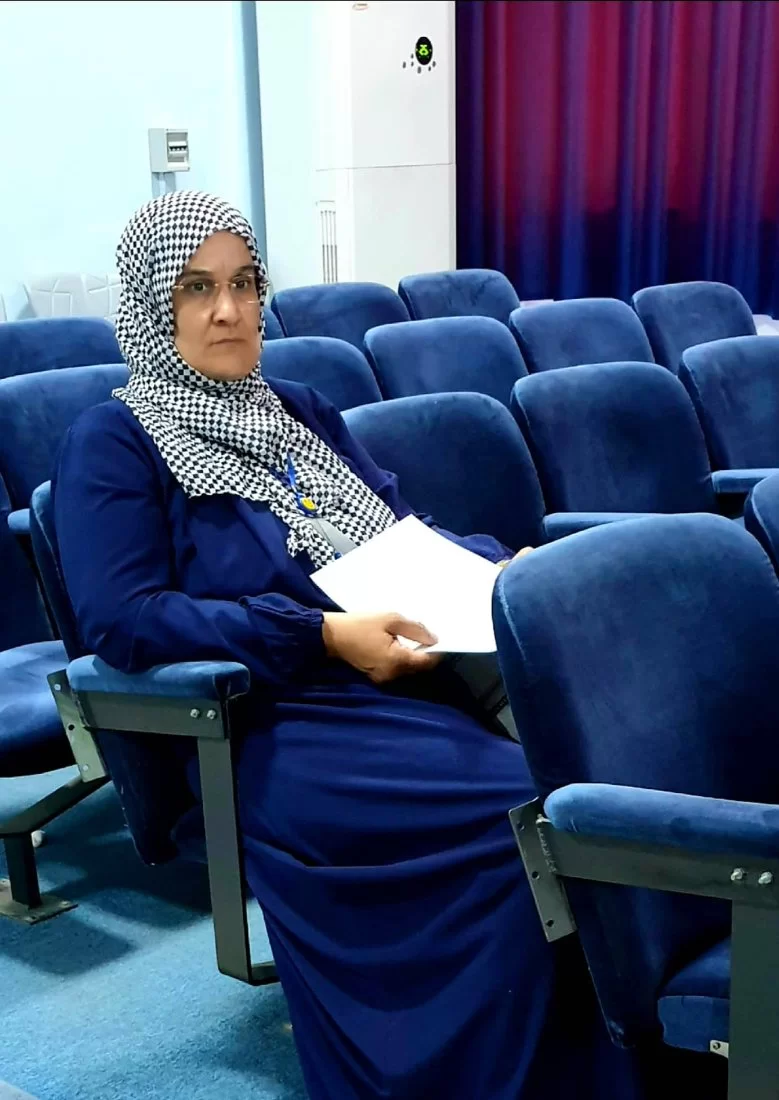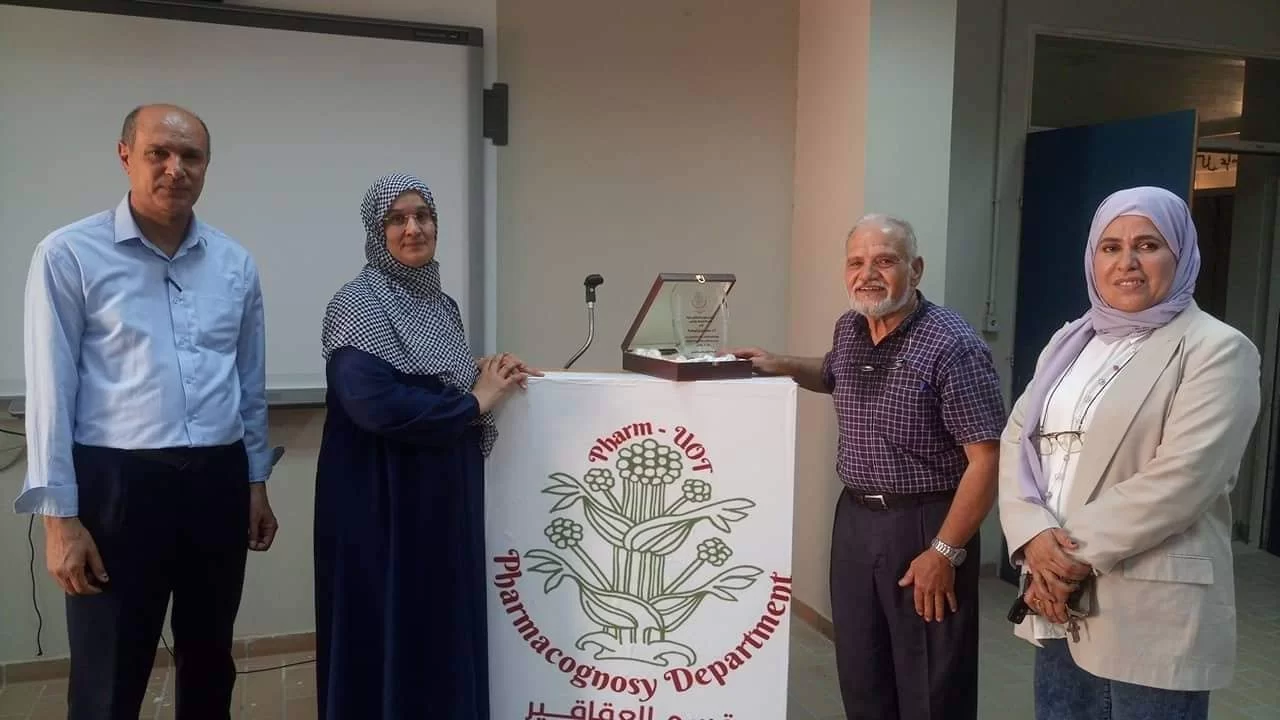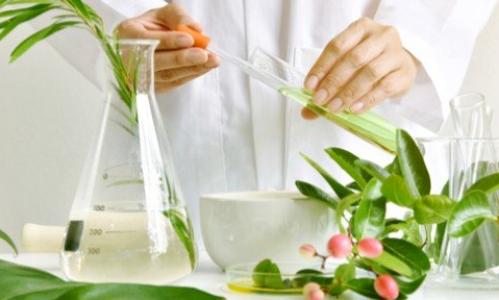"جربت هذه الدراسة لبيان إمكانية استخدام نبات حنة العقرب Echium angustifolium Mill. دليلاً ﺤﻴﻭياً للتلوث بالعناصر الثقيلة في كل من الأماكن القريبة من الطريق والبعيدة عن الطريق لربيعي 2011 و2012 بمنطقة ترهونة، ومن أمام سور كلية الهندسة العسكرية بمنطقة تاجوراء. شملت الدراسة قياس تركيز بعض العناصر الثقيلة ﻫﻲ ﺍﻟﺭﺼﺎﺹ (Pb)، ﺍﻟﻨﺤﺎﺱ (Cu)، ﺍﻟﺤﺩﻴﺩ (Fe)، المنجنيز (Mn)، ﺍﻟﻨﻴﻜل (Ni)، ﺍﻟﻜﺎﺩﻤﻴﻭﻡ (Cd)، الكوبالت (Co)، الكروم (Cr)، الألمنيوم (Al)، الزئبق (Hg)، الزنك (Zn)، الزرنيخ (As)، والمولبيدنم (Mo). ﺃﻅﻬﺭﺕ ﺍﻟﻨﺘﺎﺌﺞ ﺘﻠﻭﺙ النبات بعناصر الألمنيوم، ﻭالمنجنيز، ﻭﺍﻟﺤﺩﻴﺩ، ﻭالنحاس، والزنك، والرصاص ﻓﻲ كل الأماكن ﺍﻟﻤﺩﺭﻭﺴﺔ، وسجلت ﺃﻋﻠﻰ ﻤﻌﺩلات تلوث لعنصري الألمنيوم ﻭﺍﻟﺤﺩﻴﺩ (926.5، 838.9 ميكروجرام/جرام وزن جاف، علي التوالي) في أوراق النبات البعيد عن الطريق لربيع 2011، وأعلى معدل تلوث بعنصر المنجنيز (94.2 ميكروجرام/جرام وزن جاف) سجل في أوراق النبات القريب من الطريق لربيع 2011، وأعلى معدل تلوث لعنصري النحاس والزنك (22، 52 ميكروجرام/جرام وزن جاف، علي التوالي) في جذور النبات البعيد عن الطريق لربيع 2011، وﺃﻋﻠﻰ معدل لعنصر الرصاص (11.07 ميكروجرام/جرام وزن جاف) في جذور النبات القريب من الطريق لربيع 2012. في حين كان الزئبق أقل العناصر تلوثاً في النبات حيث وجد بتركيز أقل من (0.01 ميكروجرام/جرام وزن جاف) في كل أجزاء النبات ولكل الأماكن المدروسة. تعزي ﺍﻟﺯﻴﺎﺩﺓ ﻓﻲ تركيز هذه العناصر ﻨﺘﻴﺠﺔ ﻟﻨﻤﻭ ﺍﻟﻨﺒﺎﺕ ﻓﻲ ﺘﺭﺒﺔ ﻤﻠﻭﺜﺔ ﻷﺴﺒﺎﺏ ﺘﻌﻭﺩ ﻟﻌﻭﺍﻤل ﺍﻟﺘﺠﻭية ﺍﻟﺠﻴﻭﻟﻭﺠﻴﺔ ﻟﻠﺘﺭﺒﺔ ﺃﻭ ﻨﺘﻴﺠﺔ ﺯﻴﺎﺩﺓ ﻤﺨﻠﻔﺎﺕ المنازل التي غالباً ما تطمر عشوائياً في أراضي المنطقة، بالإضافة لمجاري ﺍﻟﺼﺭﻑ ﺍﻟﺼﺤﻲ، كذلك ﺯﻴﺎﺩﺓ مخلفات ﺍﻟﺴﻴﺎﺭﺍﺕ ﻭﻭﺴﺎﺌل ﺍﻟﻨﻘل ﺍﻟﻤﺨﺘﻠﻔﺔ، أو ربما نتيجة الحرب خلال عامي 2011 و2012 وما رافقها من انفجارات هائلة للقنابل والصواريخ الحربية ورمي عشوائي للرصاص والذخائر الحربية، بالإضافة إلي كثافة مرور سيارات وشاحنات الأرتال العسكرية، الأمر الذي قد يكون ترتب عليه زيادة في معدل التلوث، كما أن انخفاض تركيز ﻋﻨﺎﺼﺭ الكروم، النيكل، الكوبالت، الكادميوم، الزرنيخ، الزئبق، والمولبيدنم في النبات؛ ﺭﺒﻤﺎ ﻴﻌﻭﺩ لإنخفاض تركيزها في التربة، بالإضافة إلى عدم وجود مصانع بالقرب من مناطق الدراسة، وبالتالي ﻗﻠﺔ ﺍﻟﺘﻌﺭﺽ ﻟﻠﻤﻠﻭﺜﺎﺕ ﺍﻟﺼﻨﺎﻋﻴﺔ. تم أيضاً في هذه ﺍﻟدراسة استخلاص صبغة طبيعية من جذور النبات واستخدامها ﻓﻲ ﺼﺒﺎﻏﺔ ﻋﻴﻨﺎﺕ نسيجية ﻤﺨﺘﻠﻔﺔ هي ﺍﻟﺼﻭﻑ، ﺍﻟﺤﺭﻴﺭ، ﺍﻟﻘﻁﻥ والنايلون، واﺴﺘﺨﺩﻡ لتثبيت الصبغة على النسيج سبعة ﻤﺜﺒﺘﺎﺕ ﻤﺨﺘﻠﻔﺔ ﻫﻲ (كلوريد ﺍﻟﻘﺼﺩﻴﺭ، كبريتات أمونيا الألمنيوم (الشب)، ﺜﻨﺎﺌﻲ كرومات ﺍﻟﺒﻭﺘﺎﺴﻴﻭﻡ، كلوريد الكروم، كلوريد النيكل، كبريتات النحاس ﻭكبريتات ﺍﻟﺤﺩﻴﺩﻭﺯ). تمت عملية الصباغة بعدة طرق هي: الصباغة بالمستخلص المائي للجذور ( 50جم جذور بنية/ 500 مل ماء مقطر)، و(25 جم جذور حمراء قرمزية/ 500مل ماء مقطر)، والصباغة بالمستخلص الكحولي للجذور 50جم جذور حمراء قرمزية / 400)مل كحول : 100مل ماء مقطر)، 100 جم جذور حمراء قرمزية/( 400مل كحول : 100مل ماء مقطر)، و 25جم جذور حمراء قرمزية/(100 مل كحول :400 مل ماء مقطر)، والصباغة باستخدام الميكروويف (microwave dyeing) والصباغة باستخدام الطاقة الشمسية (solardyeing). حيث ﺘﻡ ﺍﻟﺤﺼﻭل ﻋﻠﻰ ﺍﻟﻌﺩﻴﺩ ﻤﻥ ﺍﻷﻟﻭﺍﻥ الجميلة المتفاوتة التدرج بين الداكنة إلي الخافتة. تلا ذلك ﺩﺭاسة ﺨﺼﺎﺌﺹ ﺜﺒﺎﺕ لون العينات النسيجية المصبوغة للغسيل، الضوء، الحك الجاف والرطب، والعرق الحمضي والقاعدي، حيث ﺃظهرت ﺍﻟﻨﺘﺎﺌﺞ بصفة عامة تقريباً لجميع أنواع الصباغة المستخدمة أن درجة ﺜﺒﺎﺕ اﻟﺼﺒﻐﺔ المستخلصة من جذور نبات حنة العقرب Echium angustifolium Mill. لكل من : اﻠﻐﺴﻴل: كانت من معتدلة إلى ممتازة علي الصوف والحرير ﺃﻤﺎ على القطن والنايلون فقد تراوحت درجة ﺜﺒﺎﺘﻬﺎ من ضعيفة إلى ممتازة، وبدون ﺩﺭﺠﺔ ﺘﺒﻘﻊ تذكر. ضوء الشمس الطبيعي: كانت درجة الثبات من سيئة إلى جيدة علي الصوف والنايلون، ومن سيئة للغاية إلى جيدة على الحرير والقطن، وأوضحت النتائج ﺃﻥ ﻋﻴﻨﺎﺕ ﺍﻟﺼﻭﻑ ﻗﺩ ﺃﻅﻬﺭﺕ ﺃﻓﻀل ﻗﺎﺒﻠﻴﺔ ﻟﻠﺼﺒﺎﻏﺔ ﻭﺜﺒﺎﺘﹰﺎ للضوء ﻴﻠﻴﻬﺎ ﻋﻴﻨﺎﺕ النايلون ثم ﺍﻟﺤﺭﻴﺭ ﺜﻡ ﺍﻟﻘﻁﻥ.الاحتكاك الجاف والرطب: درجة ثبات الصبغة على الصوف كانت من ضعيفة إلى ممتازة في الحك الجاف، ومن معتدلة إلى ممتازة للحك الرطب. أما على الحرير والقطن والنايلون كانت درجة ثباتها من معتدلة إلى ممتازة. العرق الحمضي والقاعدي: درجة ثبات الصبغة على الصوف والقطن كانت من ضعيفة إلى ممتازة للعرق الحمضي، ومن معتدلة إلى ممتازة للعرق القاعدي. أما على الحرير فقد كانت درجة ثباتها للعرق الحمضي والقاعدي ما بين الضعيفة إلى الممتازة، وما بين المعتدلة إلى الممتازة للنايلون. كما تبين من النتائج أن أفضل درجة ثبات للون للعينات النسيجية المصبوغة كانت ﻋﻨﺩ ﺍﺴﺘﺨﺩﺍﻡ كل من المثبتات كلوريد الكروم وكبريتات النحاس، كما بينت النتائج أن ﺍﻟﻌﻴﻨﺎﺕ النسيجية ﺍﻟﻐﻴﺭ ﻤﺜﺒﺘﺔ (no mordant) لكل من النايلون والقطن والصوف أعطت أفضل ثبات للون عند استخدام الصباغة بالمستخلص المائي للجذور (25 جم/ 500مل). أما عينات الحرير الغير مثبته فقد أعطت أفضل ثبات للون عند استخدام الصباغة بواسطة الطاقة الشمسية. كما تم في هذه الدراسة إجراء مسح كيميائي ((Phytochemical Screening للمركبات الأيضية الثانوية الفعالة الموجودة في كل من جذور، وأوراق، وأزهار نبات حنة العقرب (Echiumangustifolium Mill.) والتي أظهرت وجود القلويدات (Alkaloids) في كل من الأوراق والأزهار، ووجود التربينات في كل من الجذور والأزهار، ووجود السكر المختزل في كل أجزاء النبات، ووجود التانينات في كل من الأوراق والجذور، أما الأنثراكوينون فقد وجد في الجذور فقط، بينما وجدت الفلافونيدات في الجذور والأزهار، ووجد الانثوسيانين في الأزهار فقط، كما أظهرت النتائج الغياب الكلي للصابونين والكومارين والكاروتين في كل أجزاء النبات. �Abstract This study demonstrated that the possibility of using the plant Henna Al agrab Echium angustifolium Mill., as vital evidence for contamination with heavy metals. Collected the samples of the plant from Tarhuna area, from places the near and away from the road in spring 2011 and 2012, and from Tajura area, from in front of Faculty of Engineering Tajura military for spring 2012. The study involved measuring the concentration of some heavy metals which are: Lead (Pb), Copper (Cu), Iron (Fe), Manganese (Mn), Nickel (Ni), Cadmium (Cd), Cobalt (Co), Chromium (Cr), Aluminum (Al), Mercury (Hg), Zinc (Zn), Arsenic (As), and Molybdenum (Mo). The results showed that contamination of the plant by elements; aluminum, manganese, iron, copper, zinc, and lead in all the places studied. The highest rates of contamination of aluminum and iron (926.5 and 838.9 µg / g dry weight, respectively) were recorded in the leaves of the plant that taken far from the road for spring 2011. The highest rate of contamination of manganese (94.2 µg / g dry weight) was recorded in the leaves of the plant that taken near from the road for spring 2011. The highest rate of contamination of copper and zinc (22 and 52 µg / g dry weight, respectively) were recorded in the roots of the plant that taken far from road for spring 2011. The highest rate of lead element was (11.07 µg / g dry weight) in roots of the plant near the road for spring 2012. While mercury was less elements polluted in the plant where it found by concentration of less than (0.01µg / g dry weight) in all parts of the plant and all the places studied. The increase in the concentration of these elements as a result of plant growth in contaminated soil, owing to factors weathering geological soil or a result of increased domestic waste which is often thrown randomly in the territory of the region, in addition to sewage, as well as, increase the remnants of cars and different transports or a result the massive explosions of the bombs and missiles of war and throw a randomly for bullet and ammunition in addition to the intensity of the passage of cars, trucks, military convoys, which may be a consequent increase in the rate of pollution. The low concentration of the elements chromium, nickel, cobalt, cadmium, arsenic, mercury, and molybdenum in the plant; possibly due to the low concentration in the soil, as well as, the lack of factories near the areas of study, and therefore a lack of exposure to industrial pollutants. Extract natural dye from the roots of the plant and used in dyeing samples of fabrics different are wool, silk, cotton, nylon, and used in fixing the dye on fabrics seven different mordants were (tin chloride, alum, potassium dichromate, chromium chloride, nickel chloride, copper sulphate and ferrous sulphate). Used different techniques in the dyeing process: the aqueous extraction (50g brown coloured roots / 500 ml of distilled water, (25g crimson red coloured roots / 500 ml of distilled water), and the alcoholic extracts 50g crimson red coloured roots / (400 ml alcohol : 100 ml distilled water), 100g crimson red coloured roots / (400 ml alcohol : 100 ml distilled water), 25g crimson red coloured roots / (100 ml alcohol : 400 ml distilled water), and dyeing using microwave (microwave dyeing) and dyeing in the sun (solar dyeing). Where they were colours varying between dark to dim. Following that studying the properties of colour fastness to washing, light, dry and wet abrasion, and acid and alkaline artificial perspiration. Results showed generally for all techniques, the degree of fastness of the dye extracted from the roots of the plant Henna Alagrab, Echium angustifolium Mill., for each: Colour Fastness to Washing: medium to excellent on wool, silk while, cotton and nylon degree of fastness has ranged from weak to excellent, and without a degree stain(spotting).Colour Fastness to natural sunlight: degree of fastness from bad to good for wool and nylon, it is between very bad to good on silk and cotton, and the results showed that the samples of wool has shown the best fastness of the dye and fastness for light, followed by samples of nylon and silk and cotton.Colour Fastness to dry and wet friction: degree of fastness of the dye wool from weak to excellent in the dry friction, and middle-to-excellent wet friction. silk, cotton, nylon were the degree of fastness from moderate-to-excellent.Colour Fastness to acid and alkaline artificial perspiration: The degree of fastness of the dye on the wool and cotton were between the poor to excellent in the acid perspiration, and medium-to-excellent in the alkaline perspiration. The silk was the degree of fastness perspiration acid and alkaline from excellent to poor, and between the middle to the excellent on nylon. Results show also that the best degree of fastness of the colour of the different samples textile was when using each of the mordants chromium chloride, copper sulfate, as demonstrated by the results that the tissue samples without mordant each of the nylon, cotton and wool gave better fastness for colour in the aqueous extract of (25g crimson red coloured roots / 500 ml of distilled water). Samples without mordant of the silk gave better fastness for colour in solar dyeing. In this study also was performed phytochemical screening for active metabolites secondary compounds in the roots, leaves, and flowers plant Henna Al agrab (Echium angustifolium Mill.), Which showed the presence of alkaloids in each of the leaves, flowers. And the presence of terpenes in each of the roots and flowers. As well as, the presence of a reducing sugar content in all parts of the plant. Moreover, the presence of tannins in both leaves and roots. While the anthraquinones were found in the roots only. The flavonoids were found in the roots and flowers. The anthocyanins found in flowers only, the results showed that the saponin and coumarin and carotenes in all parts of the plant were absence."
مفيدة سعد التهامي إبرهيم (2014)
Publisher's website









